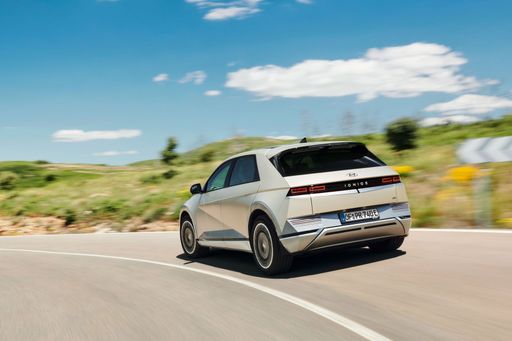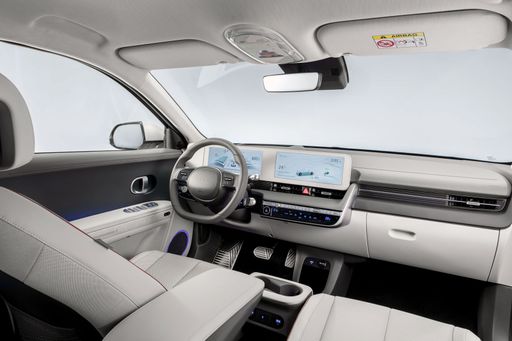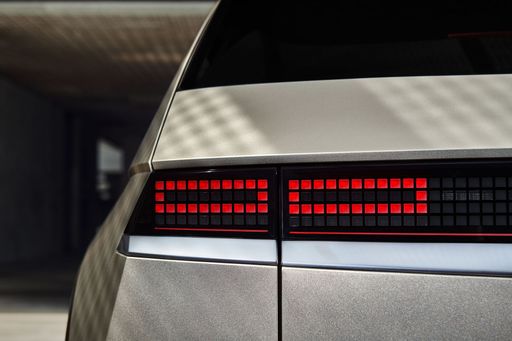Hyundai IONIQ 5 vs Aiways U5 – Which car suits you better?
Everyday use, family trips or long-distance drives – here’s where the differences show.
Discover whether Hyundai IONIQ 5 or Aiways U5 fits your lifestyle better.
Costs and Efficiency:
Price and efficiency are key factors when choosing a car – and this is often where the real differences emerge.
Aiways U5 has a to a small extent advantage in terms of price – it starts at 33900 £, while the Hyundai IONIQ 5 costs 38500 £. That’s a price difference of around 4570 £.
In terms of energy consumption, the advantage goes to the Hyundai IONIQ 5: with 15.60 kWh per 100 km, it’s barely noticeable more efficient than the Aiways U5 with 16.60 kWh. That’s a difference of about 1 kWh.
As for range, the Hyundai IONIQ 5 performs distinct better – achieving up to 570 km, about 160 km more than the Aiways U5.
Engine and Performance:
Under the bonnet, it becomes clear which model is tuned for sportiness and which one takes the lead when you hit the accelerator.
When it comes to engine power, the Hyundai IONIQ 5 has a decisively edge – offering 650 HP compared to 204 HP. That’s roughly 446 HP more horsepower.
In acceleration from 0 to 100 km/h, the Hyundai IONIQ 5 is convincingly quicker – completing the sprint in 3.50 s, while the Aiways U5 takes 7.50 s. That’s about 4 s faster.
In terms of top speed, the Hyundai IONIQ 5 performs clearly perceptible better – reaching 260 km/h, while the Aiways U5 tops out at 160 km/h. The difference is around 100 km/h.
There’s also a difference in torque: Hyundai IONIQ 5 pulls significantly stronger with 770 Nm compared to 310 Nm. That’s about 460 Nm difference.
Space and Everyday Use:
Beyond pure performance, interior space and usability matter most in daily life. This is where you see which car is more practical and versatile.
Both vehicles offer seating for 5 people.
In curb weight, Aiways U5 is somewhat lighter – 1720 kg compared to 1955 kg. The difference is around 235 kg.
In terms of boot space, the Hyundai IONIQ 5 offers to a small extent more room – 520 L compared to 432 L. That’s a difference of about 88 L.
In maximum load capacity, the Hyundai IONIQ 5 performs minimal better – up to 1580 L, which is about 25 L more than the Aiways U5.
When it comes to payload, Hyundai IONIQ 5 slightly takes the win – 530 kg compared to 435 kg. That’s a difference of about 95 kg.
Who wins the race?
The Hyundai IONIQ 5 proves to be outperforms in nearly all aspects and therefore becomes our DriveDuel Champion!
Hyundai IONIQ 5 is the better all-rounder in this comparison.

Hyundai IONIQ 5
Hyundai IONIQ 5
The Hyundai IONIQ 5 showcases a bold and futuristic design that captures attention with its striking facade and sharp lines. This electric vehicle offers an impressive blend of performance and efficiency, making it a compelling choice for environmentally conscious drivers. Inside, the spacious and tech-forward interior provides a comfortable and engaging driving experience for both driver and passengers.
details @ hyundai.news
@ hyundai.news
 @ hyundai.news
@ hyundai.news
 @ hyundai.news
@ hyundai.news
 @ hyundai.news
@ hyundai.news
 @ hyundai.news
@ hyundai.news
Aiways U5
The U5 stands out in the electric vehicle market with its stylish design and spacious interior, making it an attractive option for families and urban drivers alike. Its smooth performance and impressive range cater to the modern consumer's need for practicality without sacrificing comfort. With a focus on sustainability and innovation, the U5 is poised to make a significant impact on the future of eco-friendly transportation.
details

|
|
|
|
|
Costs and Consumption |
|
|---|---|
|
Price
38500 - 64200 £
|
Price
33900 - 39900 £
|
|
Consumption L/100km
-
|
Consumption L/100km
-
|
|
Consumption kWh/100km
15.6 - 21.2 kWh
|
Consumption kWh/100km
16.6 - 17 kWh
|
|
Electric Range
440 - 570 km
|
Electric Range
400 - 410 km
|
|
Battery Capacity
63 - 84 kWh
|
Battery Capacity
-
|
|
co2
0 g/km
|
co2
0 g/km
|
|
Fuel tank capacity
-
|
Fuel tank capacity
-
|
Dimensions and Body |
|
|---|---|
|
Body Type
SUV
|
Body Type
SUV
|
|
Seats
5
|
Seats
5
|
|
Doors
5
|
Doors
5
|
|
Curb weight
1955 - 2275 kg
|
Curb weight
1720 - 1770 kg
|
|
Trunk capacity
480 - 520 L
|
Trunk capacity
432 L
|
|
Length
4655 - 4715 mm
|
Length
4680 mm
|
|
Width
1890 - 1940 mm
|
Width
1865 mm
|
|
Height
1585 - 1605 mm
|
Height
1700 mm
|
|
Max trunk capacity
1540 - 1580 L
|
Max trunk capacity
1555 L
|
|
Payload
385 - 530 kg
|
Payload
385 - 435 kg
|
Engine and Performance |
|
|---|---|
|
Engine Type
Electric
|
Engine Type
Electric
|
|
Transmission
Automatic
|
Transmission
Automatic
|
|
Transmission Detail
Reduction Gearbox
|
Transmission Detail
Reduction Gearbox
|
|
Drive Type
Rear-Wheel Drive, All-Wheel Drive
|
Drive Type
Front-Wheel Drive
|
|
Power HP
170 - 650 HP
|
Power HP
204 HP
|
|
Acceleration 0-100km/h
3.5 - 8.5 s
|
Acceleration 0-100km/h
7.5 - 7.7 s
|
|
Max Speed
185 - 260 km/h
|
Max Speed
160 km/h
|
|
Torque
350 - 770 Nm
|
Torque
310 Nm
|
|
Number of Cylinders
-
|
Number of Cylinders
-
|
|
Power kW
125 - 478 kW
|
Power kW
150 kW
|
|
Engine capacity
-
|
Engine capacity
-
|
General |
|
|---|---|
|
Model Year
2024
|
Model Year
2022
|
|
CO2 Efficiency Class
A
|
CO2 Efficiency Class
A
|
|
Brand
Hyundai
|
Brand
Aiways
|
What drive types are available for the Hyundai IONIQ 5?
The Hyundai IONIQ 5 is available as Rear-Wheel Drive or All-Wheel Drive.
The prices and data displayed are estimates based on German list prices and may vary by country. This information is not legally binding.
